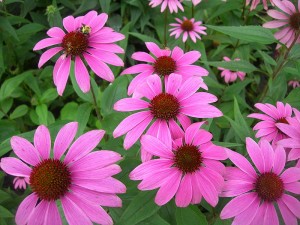 Botanical Name:
Botanical Name:
Asteraceae
Common Name:
Sampson Root, Black Sampson, Red Sunflower
Discussion:
Echinacea is a group of plants related to daises, and the several varieties are sometimes referred to together as coneflowers.
They are unique to eastern North America and frequently grow in the open woods or dry grasslands.
The word echinacea comes from Greek, with echino meaning “sea urchin”. They are named after the sea urchin becomes of the flower’s resemblance to the sea animal.
Their colorful and unique flowers are often sought after in gardens, and several members of the echinacea group are used commonly in natural alternative remedies.
Nutritional Value:
Not a significant source of vitamins or minerals.
Medicinal Value:
Echinacea was known to have been used by several Native American Indian tribes, including the Kiowa, Cheyenne, Pawnee, and Lakotah for many of the symptoms associated with colds, such as headache, sore throat, and cough. Today you can buy echinacea capsules that concentrate the medicinal qualities of this plant. Some studies have indicated that less reputable brands do not include the appropriate species of echinacea, so it’s important to only purchase your supplements from well-regarded companies.
Just how echinacea works to moderate the severity of cold-like symptoms isn’t entirely understood. But several animal studies have found that taking echinacea supplements may boost the human immune system as well as reduce swelling and decrease pain.
There are numerous documented uses of echinacea as it has many effects on body processes. Some of the more unusual uses of echinacea include the treatment of:
- urinary tract infections
- athlete’s foot
- ear infections
- hay fever
- yeast infections
Posts About Echinacea:
Echinacea for the Flu
Echinacea Benefits and Side Effects
10 Best Herbs for a Sore Throat
Source: University of Maryland Medical Center
